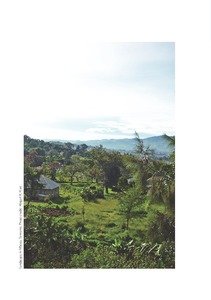Location
Bioversity International is a global research-for-development organization. We have a vision – that agricultural biodiversity nourishes people and sustains the planet.
We deliver scientific evidence, management practices and policy options to use and safeguard agricultural and tree biodiversity to attain sustainable global food and nutrition security.
We work with partners in low-income countries in different regions where agricultural and tree biodiversity can contribute to improved nutrition, resilience, productivity and climate change adaptation.
Members:
Resources
Displaying 96 - 100 of 184La multiplication de materiel de plantation de qualite pour ameliorer l’etat sanitaire et la productivite des cultures. Pratiques clefs pour les bananiers et les bananiers plantain: guide illustre.
This illustrated guide summarizes the key practices for producing clean planting material of banana with a high yield potential for smallholders, depending on the pests and diseases which are present. The guide is also designed to contribute to better planning of the propagation of planting material for rural development and disaster relief projects.
La propagacion de material de siembra de calidad para mejorar la salud y productividad del cultivo: practicas clave para las musaceas: guia ilustrada
This illustrated guide summarizes the key practices for producing clean planting material of banana with a high yield potential for smallholders, depending on the pests and diseases which are present. The guide is also designed to contribute to better planning of the propagation of planting material for rural development and disaster relief projects.
Invasion and saturation risk of pathogens and pests based on global cropland connectivity: the case of banana, cassava, potato, sweet potato, and yam
Integrated landscape initiatives in practice: assessing experiences from 191 landscapes in Africa and Latin America
Impact of traditional culture on Camellia reticulata in Yunnan, China
Background: Cha-hua (Camellia reticulata) is one of China’s traditional ornamental flowers developed by the local people of Yunnan Province. Today, more than 500 cultivars and hybrids are recognized. Many ancient camellia trees still survive and are managed by local peopl. A few records on cha-hua culture exist, but no studies expound the interaction between C. reticulata and traditional culture of ethnic groups. The contribution of traditional culture of differ






